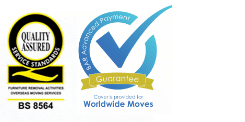0800 246 5622


Removals to Spain - Guide to driving in Spain
Hamiltons Removals provide weekly removals to Spain. We specialise in domestic house moves, commercial and corporate relocations, as well as transporting specialist items like vehicles, machinery and boats. We have put together this guide to driving in Spain, to assist you on your moving day. All information is believed to be correct at the time of publishing – however please check with our Spanish removals department prior to your departure.
For more information on our removals to Spain service, please click here
Driving in Spain - Introduction
When moving to Spain, your chosen removals company will be entrusted with the transport of the majority of your furniture and household belongings whilst the transportation of your family and personal effects will fall to you. Your method of transportation will largely depend upon the size of your family, the location of your chosen destination and whether or not you choose to take your English registered car with you.
Many people opt to drive down, preferring to take their own, familiar cars with them to Spain and there are many ways in which you can do this.
- Ferry - A very good service operates from Plymouth to Santander.
- Train - The Channel Tunnel and Motorrail combinations will take you down to Biarritz or Narbonne, leaving you to drive down the rest of the way.
- Road - The road networks are very good. A suggested route would follow a line down through France, from Calais to Rouen, on down to Tours and Bordeaux and from there down to the Spanish border. Once at the Spanish border your route of course will vary, depending upon the location of your final destination.
Driving in Spain – Regulations
To be able to drive a foreign registered vehicle in Spain you must have with you the following items:
- Your current and valid passport.
- Current driving licence, preferably the EU type with the official EU symbol.
- Two EU approved, red warning triangles
- Approved reflective jackets. These must be worn by all those who venture outside the vehicle at any time during the day or night. The jackets must be kept inside the car so they can be put on before getting out and also must be visible from outside the car. The pocket in the back of the front seat is a suggested stowage place.
- A set of spare lamps/bulbs for your car and the tools to change them.
- If you wear corrective glasses for driving, a spare pair must be kept in the car at all times.
- Official EU number plates bearing the EU logo containing your country code, or a small plate/sticker with your country code, secured to the rear of the car.
- Valid insurance documentation.
- All vehicle documents relating to the car (legally certified copies are OK)
A first aid kit and fire extinguisher are recommended but not mandatory.
Driving in Spain – Driving on the right
It can take a little time to adjust to driving on the right side of the road. For about £5 you can buy a reference sticker that can be stuck on the inside of your windscreen. This is invaluable for referring to, during the first few hours, and will remind you of the correct way to proceed at roundabouts and junctions.
Driving in Spain - Using your Sat Nav or GPS system
Update your maps before leaving the UK to ensure you have up to date route information. Spanish postcodes consist of a 5 number reference that can be entered along with the street name to find your destination point but do this at the road side because it is illegal to re-programme your satellite navigation device whilst the car is in motion.
Driving in Spain - Speed limits
Motorways or Autopista are signified with the prefix A or E and followed by road numbers. These are often toll roads or peajes with a maximum speed 120 kph (73 mph)
Dual carriageways or Autovia do not necessarily have a central reservation, though most do. Their speed limits vary from 80 to 110 kph or 50 to 68 mph
Local highway speeds are varied and signed but do not usually exceed 100 kph which is 62 mph.
National highways with numbers prefixed by N or CN are limited to 60-100 kph or 37 to 62 mph.
These speed limits are limited further for various classes of vehicles including towed trailers/caravans.
Driving in Spain - Pedestrian crossings
A pedestrian must step onto the crossing, remembering to look LEFT, and show the palm of their hand to any approaching vehicles. Until recently, an approaching vehicle did not have to stop, but a new Law involving penalty points means that the drivers can be penalised now for not stopping.
Driving in Spain - Some basic rules
- You may NOT overtake on the right on the highways unless there is a slip road or another road indicated and you are taking it.
- Give way to traffic from the right unless otherwise signed.
- Give way to the left at roundabouts unless otherwise indicated.
- Do not pull into the middle of the road to turn left if there is a solid line in the road. There are often special lanes for this, signposted cambio de sentido (change of direction), especially on the autovias.
- Every person in the car must wear seatbelts if they are fitted.
- Children must be in specially approved (EU) seats situated only in the rear due to possible injury by front airbags in the event of a crash.
- Do not drink and drive - the limits are about half those in the UK and the penalties are severe including losing your licence on the spot.
- There are also heavy on-the-spot fines in place for other driving offences and you will not be allowed to leave the area until you have paid the fine or appeared in Court. If you cannot pay the fine, you will spend time in the cells.
Driving in Spain - Parking
Generally speaking, you may not park anywhere in Spain where the curb is painted yellow or where a no parking sign is displayed. In the major cities and large towns, non-metered on-street parking is in short supply but some areas feature parking spaces marked in blue for which you can purchase a ticket from a nearby machine which is usually topped with a blue and white “P” sign. Other areas will have an attendant on duty who can issue tickets upon request. These spaces are usually restricted to a maximum stay of two hours and penalties are in place should you outstay your welcome.
If you park illegally, your car will very likely be towed away. In place of your car will be a sticker left on the curb side with the phone number and address of your car’s new location. Getting your car back will cost you dearly so where possible, find an underground parking facility with security attendance.
Driving in Spain - Seatbelts
It is compulsory for all car occupants to wear seatbelts, both in the front and back if they are fitted. If a passenger is found not to be wearing their seatbelt, the driver of the car faces prosecution. Children under 12 are not allowed in the front unless they are over 150 cm or 4’ 9” and if they are riding in the back, their belts must fit correctly, or a booster seat must be fitted. Animals must be restrained when in the passenger section and not allowed to jump around.
Driving in Spain - Toll roads
Spain has many miles of toll road with more planned in the future. They are very good roads and they all have service stations with cafés of an acceptable standard every 40km or so. The tolls are expensive and in the summer, the rates are increased. Some toll roads allow you to collect a ticket at the start of your journey and then pay the total when you exit the road but this depends on the ownership of the toll road.
Driving in Spain - Mobile phones
The use of mobile phones, other than the hands-free arrangement, whilst driving is banned in Spain, even at the roadside. You have to pull off the road completely away from any traffic. Headphones and the like are also banned.
Driving in Spain - Towing a trailer
You are allowed to tow a trailer in Spain subject to certain rules. Your vehicle tow bar must be inspected as part of your ITV (MOT) and you must have a fitting certificate. There is no charge for the inspection, on top of your ITV fees. The trailer does not require its own registration number but must clearly display the number plate of the towing vehicle.
Removals to Spain – contact us now for more information or click here for a free removals quote














